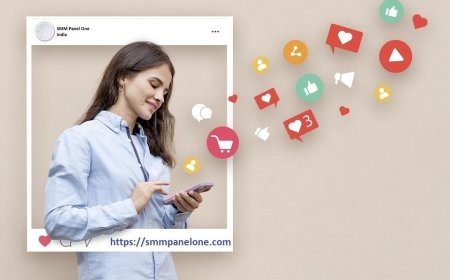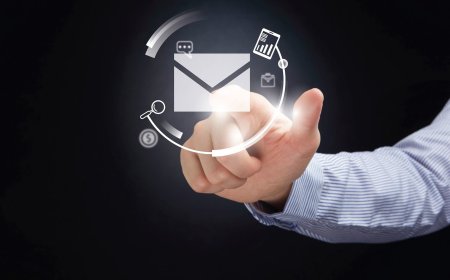How to plan a Miami corporate happy hour
How to Plan a Miami Corporate Happy Hour Planning a corporate happy hour in Miami is more than just arranging drinks and appetizers—it’s an opportunity to strengthen team cohesion, celebrate milestones, and reinforce company culture in one of the most vibrant and dynamic cities in the United States. With its tropical ambiance, diverse culinary scene, and endless venue options, Miami offers a uniqu
How to Plan a Miami Corporate Happy Hour
Planning a corporate happy hour in Miami is more than just arranging drinks and appetizers—it’s an opportunity to strengthen team cohesion, celebrate milestones, and reinforce company culture in one of the most vibrant and dynamic cities in the United States. With its tropical ambiance, diverse culinary scene, and endless venue options, Miami offers a unique backdrop for corporate social events that leave a lasting impression. However, without thoughtful planning, even the most promising happy hour can fall flat. This guide provides a comprehensive, step-by-step roadmap to designing a successful Miami corporate happy hour that aligns with your business goals, accommodates diverse preferences, and maximizes engagement—all while staying within budget and logistical constraints.
Corporate happy hours serve as informal touchpoints that humanize workplace relationships. In high-pressure industries like finance, tech, or real estate—where Miami is a major hub—employees often work long hours in structured environments. A well-executed happy hour breaks down barriers, encourages cross-departmental communication, and boosts morale. When planned strategically, it becomes more than a social event; it becomes a retention tool, a branding asset, and a reflection of your company’s values.
This guide will walk you through every phase of planning—from initial concept to post-event follow-up—tailored specifically to Miami’s unique landscape. Whether you’re organizing your first event or refining a recurring tradition, you’ll find actionable insights, local recommendations, and proven best practices to elevate your next gathering.
Step-by-Step Guide
Define Your Objectives and Audience
Before selecting a venue or sending out invites, clarify the purpose of your happy hour. Are you celebrating a quarterly win? Welcoming new hires? Encouraging cross-team collaboration? Or simply offering a stress-relieving outlet after a busy season? Each goal shapes the tone, format, and logistics of the event.
Equally important is understanding your audience. Miami’s workforce is incredibly diverse—spanning international professionals, young creatives, seasoned executives, and remote workers. Consider:
- How many people are attending? (This affects venue capacity and catering needs.)
- Are there dietary restrictions or cultural considerations? (Miami’s population includes Latin American, Caribbean, and European communities with varied preferences.)
- Will alcohol be served? If so, are there legal or company policy constraints?
- Is transportation a concern? Many attendees may not drive, especially if the event is after work.
Aligning your event’s purpose with your audience’s needs ensures higher attendance and more meaningful engagement. For example, if your team is largely young professionals, a rooftop bar with live music may resonate more than a quiet lounge with wine tastings.
Set a Realistic Budget
Budgeting is the backbone of any successful event. In Miami, costs can vary dramatically depending on location, season, and vendor choices. Start by allocating funds across these core categories:
- Venue rental or minimum spend: Many venues require a food and beverage minimum, especially in South Beach or Brickell. Budget $15–$40 per person for this alone.
- Catering: Miami offers everything from gourmet canapés to Latin street food. Plan $10–$25 per person depending on quality and quantity.
- Drinks: Open bar? Limited drink tickets? A cash bar? Estimate $8–$18 per drink, depending on alcohol type and brand. A full open bar can easily add $20–$35 per attendee.
- Entertainment: Live music, DJs, or themed activities (like cocktail-making stations) can cost $200–$1,000+.
- Transportation: Arrange shuttles from key neighborhoods if needed—especially if the venue is outside walking distance from transit hubs.
- Decor and branding: Simple touches like custom napkins, branded coasters, or a photo backdrop can enhance the experience for $100–$500.
- Contingency: Always reserve 10–15% of your budget for last-minute changes or unexpected expenses.
Pro tip: Negotiate with venues during off-peak seasons (late August–September, or mid-January–February) for better rates. Many places offer corporate discounts if you book in advance or commit to recurring events.
Choose the Right Date and Time
Timing is everything. In Miami, weekends are prime time for social events, but corporate happy hours should ideally occur on a weekday—typically Thursday or Friday after 5 PM. Avoid holidays, major local events (like Art Basel or Miami Music Week), and extreme weather periods (June–October is hurricane season).
Consider your team’s schedule. If your company has early risers or remote employees in different time zones, a 5:30 PM start time allows for a smooth transition from work. Avoid scheduling on the last Friday of the month—many employees are already planning weekend getaways.
Use a scheduling tool like Doodle or Google Forms to poll your team for preferred dates. This simple step increases buy-in and ensures higher attendance.
Select a Venue That Matches Your Vibe
Miami’s venue options are vast—and the right choice can elevate your event from ordinary to unforgettable. Here are the top categories to consider:
1. Rooftop Bars
Perfect for a sleek, upscale vibe. Popular options include:
- 1111 Lincoln Road – Stunning city views, modern design, and flexible private spaces.
- The Roof at The Standard – Trendy, open-air, with a Miami Beach backdrop.
- Bar 1235 – Located in the W Hotel, ideal for a chic, cosmopolitan crowd.
Benefits: Breathtaking views, Instagram-worthy backdrops, and high perceived value. Drawbacks: Higher price points and limited space.
2. Beachfront Lounges
For a relaxed, tropical feel, consider:
- The Deck at Island Gardens – Private cabanas, ocean views, and a laid-back vibe.
- The Surf Club – Historic, elegant, and perfect for larger groups with a luxury feel.
Benefits: Natural ambiance, easy parking, and a strong “Miami” identity. Drawbacks: Can be windy; some locations require a minimum spend of $5,000+.
3. Urban Breweries and Taprooms
Great for casual, fun atmospheres. Top picks:
- Urban Roast – A hybrid coffee shop by day, craft beer haven by night.
- Concrete Beach Brewery – Industrial-chic space with outdoor seating and local brews.
Benefits: Lower cost, inclusive vibe, and popular with younger teams. Drawbacks: Limited food options; may not feel “corporate” enough for some industries.
4. Private Event Spaces in Wynwood or Little Havana
For a culturally rich, artistic experience:
- Wynwood Walls Event Space – Surrounded by murals, ideal for creative teams.
- La Mar by Gastón Acurio – Offers private dining with Peruvian flair and ocean views.
Benefits: Unique atmosphere, strong photo opportunities, and memorable branding. Drawbacks: May require more logistical coordination.
When evaluating venues, ask about:
- Audio/visual capabilities (for toasts or presentations)
- Outdoor space availability
- Accessibility (ADA compliance, elevators, parking)
- Alcohol licensing and corkage fees
- Setup and cleanup time included
Plan the Menu and Beverage Selection
Miami’s food culture is a melting pot—your menu should reflect that diversity while being easy to eat standing up. Avoid messy or overly aromatic dishes that can linger on clothing.
Cocktail Options
Offer a signature cocktail that ties into your theme or company name. Examples:
- The Miami Mule – Vodka, ginger beer, lime, and a splash of passionfruit.
- Coconut Mojito – A tropical twist on the classic.
- Non-Alcoholic Options: Sparkling agua frescas, infused waters (cucumber-mint, pineapple-ginger), or mocktail flights.
Consider a self-serve drink station with a bartender for efficiency. For larger groups, limit drink tickets to 2–3 per person to control costs and prevent overconsumption.
Food Selection
Focus on bite-sized, shareable items:
- Latin-inspired: Empanadas, plantain chips with guacamole, mini tostones
- Seafood: Ceviche bites, shrimp skewers, smoked salmon crostini
- Global fusion: Korean BBQ sliders, Thai spring rolls, falafel bites
- Vegetarian/Vegan: Quinoa-stuffed peppers, roasted veggie wraps, hummus platters
- Desserts: Churros, flan shots, mini key lime pies
Work with your venue’s caterer or hire a local vendor like Flavorful Miami or Latin Kitchen Catering for authentic, high-quality options. Always confirm dietary labels (gluten-free, nut-free, halal, etc.) and provide clear signage.
Coordinate Logistics and Technology
Even the best-planned event can stumble on small oversights. Here’s what to nail:
- RSVP System: Use Eventbrite or Google Forms to track attendance, dietary needs, and special requests. Send reminders 72 hours in advance.
- Transportation: Partner with Uber or Lyft for discounted ride codes. Or arrange a shuttle from a central location like Brickell or Downtown Miami.
- Weather Contingency: If outdoors, confirm indoor backup space. Have fans or heaters ready depending on season.
- Sound and Lighting: Ensure background music is at a conversational level (60–70 decibels). Avoid loud EDM—opt for chill house, bossa nova, or lo-fi jazz.
- Staffing: Confirm if the venue provides servers, bartenders, and cleanup crew—or if you need to hire extras.
- Accessibility: Verify ADA compliance, elevator access, and parking availability. Include parking validation in invites.
Test your AV setup before the event. If you plan to give a short toast or announcement, rehearse with the mic. A 2–3 minute welcome speech sets the tone and makes guests feel seen.
Create Engagement Opportunities
A happy hour isn’t just about eating and drinking—it’s about connection. Avoid letting guests cluster in small groups. Facilitate interaction with:
- Icebreaker games: “Two Truths and a Lie” with a Miami twist (“I’ve swum in the Atlantic at sunrise,” “I’ve eaten at 10 different Cuban restaurants this year,” etc.)
- Photo booth: Rent a branded backdrop with fun props (hats, sunglasses, palm trees). Share photos afterward via a private Google Drive or Slack channel.
- Local trivia: Host a 5-minute Miami-themed quiz with prizes like gift cards to local restaurants.
- Networking prompts: Hand out cards with questions like, “What’s one project you’re proud of this quarter?” or “What’s your favorite Miami hidden gem?”
These small touches encourage mingling and help introverted employees feel included.
Send Invitations and Follow Up
Your invitation is your first impression. Design it with clarity and personality:
- Include: Date, time, location (with map link), dress code, RSVP deadline, parking info, and dietary form link.
- Use your company’s branding colors and fonts.
- Send via email and Slack/Teams—don’t rely on one channel.
Two days before the event, send a reminder with a weather update and a fun teaser (“Can’t wait to see you at the rooftop with our signature Miami Mule!”).
After the event, send a thank-you email with photos, a short survey (Net Promoter Score or open-ended feedback), and a sneak peek at the next event. This closes the loop and builds anticipation.
Best Practices
Embrace Miami’s Culture, Don’t Just Use It as a Backdrop
Miami isn’t just a location—it’s a living, breathing culture. Incorporate local elements authentically:
- Play Cuban jazz or reggaeton in the background.
- Use tropical flowers like hibiscus or orchids in centerpieces.
- Feature local artists or musicians—support the community while enhancing your event.
- Offer drinks made with local ingredients: Key lime, guava, passionfruit, or Cuban rum.
When done respectfully, this creates a deeper connection to place and shows your team you value authenticity over clichés.
Prioritize Inclusivity
Not everyone drinks. Not everyone enjoys loud music. Not everyone is comfortable in large groups. Design your event to be welcoming to all:
- Offer non-alcoholic cocktails and sparkling water stations.
- Provide quiet zones or outdoor seating away from the main crowd.
- Respect religious or cultural practices—offer halal or kosher options if needed.
- Use gender-neutral language in communications.
Consider a “no pressure” policy: No one should feel obligated to attend, drink, or socialize. The goal is to create a space where people feel safe, not forced.
Keep It Professional—Even When It’s Casual
A happy hour isn’t a party. Maintain a balance between relaxed and professional:
- Avoid excessive alcohol promotions or drinking games.
- Don’t use the event for performance reviews or sensitive announcements.
- Encourage managers to mingle—not dominate conversations.
- Remind attendees (subtly) that company values still apply: respect, kindness, and professionalism.
Even in a tropical setting, boundaries matter. A well-managed happy hour enhances your culture—it doesn’t undermine it.
Measure Success Beyond Attendance
Don’t just count heads. Track qualitative outcomes:
- Survey feedback: “Did you feel more connected to your team after this event?”
- Observation: Did people from different departments talk to each other?
- Engagement: How many photos were shared? How many people signed up for the next event?
- Retention: Are employees who attended more likely to stay long-term? (Track over time.)
Use this data to refine future events. A 75% satisfaction rate might seem good—but if only 30% of the team attended, you have room to grow.
Plan for Repeat Events
One-off happy hours are nice, but recurring ones build culture. Create a quarterly calendar:
- Q1: Kickoff with a rooftop brunch
- Q2: Beachside sunset gathering
- Q3: Wynwood art crawl with light bites
- Q4: Holiday-themed celebration with local artisans
Rotate venues and themes to keep it fresh. Encourage team members to suggest ideas—ownership increases participation.
Tools and Resources
Event Planning Tools
- Eventbrite – For RSVPs, ticketing, and attendee tracking.
- Google Forms – Free, simple surveys for dietary needs and feedback.
- Canva – Design professional invites, signage, and social media graphics.
- Calendly – Schedule venue walkthroughs or vendor meetings.
- Trello or Asana – Manage task lists and deadlines across your planning team.
Miami-Specific Vendors and Partners
- Flavorful Miami – Premium catering with local flavors and customizable menus.
- Latin Kitchen Catering – Authentic Cuban, Puerto Rican, and Dominican dishes.
- Miami Mobile Bar – Full-service mobile bartending for events.
- Photo Booth Miami – Branded, interactive photo booths with instant prints.
- Local Artists Collective – Hire live painters or musicians from Wynwood or Little Havana.
- Miami Dade County Event Permit Portal – For outdoor events requiring permits.
Transportation and Accessibility Resources
- Uber for Business – Pre-paid ride codes for employees.
- Lyft Corporate – Group discounts and route planning.
- Miami-Dade Transit – Free shuttle routes in downtown and Brickell areas.
- Accessible Miami – Directory of ADA-compliant venues and services.
Local Inspiration and Trends
- Time Out Miami – Weekly updates on new bars, pop-ups, and events.
- Miami New Times – Local culture and hidden gems.
- Instagram hashtags:
MiamiHappyHour, #MiamiAfterWork, #MiamiCorporateLife
Real Examples
Example 1: Tech Startup – “Code & Cocktails” at Concrete Beach Brewery
A 40-person SaaS company hosted a monthly happy hour at Concrete Beach Brewery to foster cross-team collaboration. They:
- Set a budget of $25/person ($1,000 total).
- Offered 3 signature cocktails named after their product features (“The API Margarita,” “The Cloud Cooler”).
- Partnered with a local graffiti artist to paint a live mural during the event.
- Provided Uber codes and a shuttle from their downtown office.
- Used a trivia game with questions about their product roadmap.
Result: Attendance increased from 50% to 85% over three months. Employee feedback noted “I finally met people from marketing” and “I felt like I belonged.”
Example 2: Financial Firm – “Sunset Serenade” at The Surf Club
A high-end wealth management firm hosted a quarterly happy hour for clients and employees. They:
- Chose a luxury venue to reflect their brand.
- Offered a curated wine and cheese pairing with a sommelier.
- Played a live acoustic guitarist performing Latin jazz standards.
- Provided printed menus with the firm’s logo and a QR code linking to their latest market insights.
- Did not serve alcohol to clients under 21—offered premium mocktails instead.
Result: Three clients booked new accounts after the event. Internal survey: 92% said they felt proud to work for the company.
Example 3: Remote Team – “Virtual Miami Night” Hybrid Event
A distributed team with 60% remote workers hosted a hybrid happy hour:
- Local employees met at a rooftop bar in Brickell.
- Remote employees received a “Miami Kit”: local snacks, a cocktail recipe, and a digital photo frame with Miami imagery.
- They used Zoom to stream the venue’s ambiance and host a live game of “Guess the Miami Landmark.”
- Shared a playlist of Miami artists on Spotify.
Result: Remote employees reported feeling “included” for the first time. The event became a monthly tradition.
FAQs
What’s the ideal duration for a corporate happy hour in Miami?
Most successful events last 90 minutes to 2 hours. This gives enough time to socialize without dragging into late-night territory. Start at 5:30 PM and end by 7:30 PM to respect personal time.
Do I need a permit to host a happy hour in Miami?
If you’re using a private venue, they handle permits. For public spaces like parks or beaches, you’ll need a special event permit from Miami-Dade County. Always confirm with your venue or local authorities.
How can I keep costs down without sacrificing quality?
Choose off-peak times, limit the open bar to 90 minutes, focus on local and seasonal ingredients, and use digital invites instead of printed ones. Partner with local businesses for sponsorships—e.g., a local brewery might provide drinks in exchange for branding.
Is it appropriate to serve alcohol at a corporate event in Miami?
Yes, as long as it’s done responsibly. Offer non-alcoholic options, monitor consumption, avoid games that encourage excessive drinking, and provide safe transportation options. Always follow Florida’s alcohol service laws.
How do I handle employees who don’t want to attend?
Make attendance optional and never penalize non-attendance. Communicate that the event is about connection, not obligation. Consider offering a small alternative—like a gift card to a local café—for those who opt out.
What if the weather turns bad?
Always confirm indoor backup space with your venue. Have a plan B communicated in your reminder email. Miami’s weather can shift quickly—be prepared.
Can I include family members or partners?
It depends on your company culture. Some teams invite partners for annual events; others keep it strictly professional. If you do invite guests, clearly state it in the invitation and adjust your budget accordingly.
How do I make a virtual happy hour feel authentic to Miami?
Send curated Miami-themed care packages, play a curated playlist, use a Miami backdrop on Zoom, and include a short video tour of a local landmark. Even remotely, sensory details create immersion.
Conclusion
Planning a Miami corporate happy hour is a blend of art and strategy. It requires understanding your team’s needs, respecting the city’s vibrant culture, and executing with precision—all while keeping the atmosphere warm, welcoming, and professional. The best events aren’t the most expensive or the flashiest; they’re the ones where employees leave feeling seen, connected, and genuinely appreciated.
By following the steps outlined in this guide—from defining your objectives and choosing the right venue, to crafting inclusive experiences and measuring impact—you transform a simple after-work gathering into a powerful tool for culture-building and employee engagement.
Miami offers endless possibilities. Whether you’re raising a glass on a rooftop overlooking the Atlantic, sipping a mojito under string lights in Wynwood, or sharing empanadas at a hidden courtyard in Little Havana, the goal remains the same: to create moments that matter. In a world where work is increasingly transactional, these human connections are what keep teams thriving.
Start planning your next event today. The perfect Miami happy hour isn’t just about where you go—it’s about who you become together.























